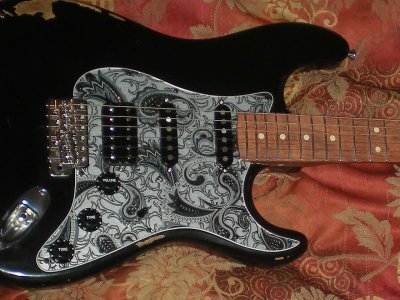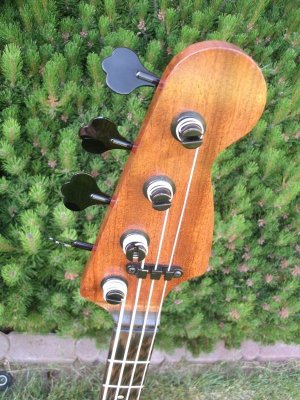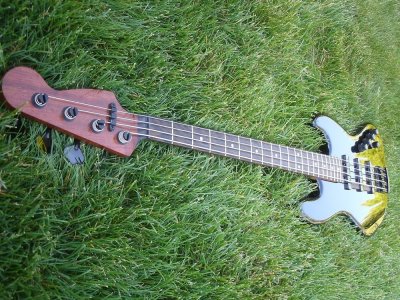
You are using an out of date browser. It may not display this or other websites correctly.
You should upgrade or use an alternative browser.
You should upgrade or use an alternative browser.
Bubinga
- Thread starter cdub
- Start date
stratamania
Mythical Status
- Messages
- 12,265
Have a scroll through...
https://www.google.com/search?biw=1440&bih=684&tbm=isch&sa=1&ei=wBmEXO7YIvGbjLsPt4-FmA8&q=bubinga+guitar+necks&oq=bubinga+guitar+necks&gs_l=img.3...13029.16874..17171...0.0..0.58.355.8......1....1..gws-wiz-img.......0i7i30j0.UF3f5zXX7Cc
https://www.google.com/search?biw=1440&bih=684&tbm=isch&sa=1&ei=wBmEXO7YIvGbjLsPt4-FmA8&q=bubinga+guitar+necks&oq=bubinga+guitar+necks&gs_l=img.3...13029.16874..17171...0.0..0.58.355.8......1....1..gws-wiz-img.......0i7i30j0.UF3f5zXX7Cc
Cagey - nice info and comparisons in that ric forum thread, thanks. I guess rics are maple necked under the fingerboard? I’ll have to look that up.
Stratamania - I did google it, I wanted to see what the Warmoth crew came up with, web results were sort of vague. Although allparts has clear photos of the bubinga neck they offer.
Frown - Bingo, just the thing I wanted to see. I have some roasted maple necks and a goncalo neck, but all the things I read about bubinga make me think, killer neck back material. Any comparison you can make vs goncalo would be welcome as well. Thanks so much for your time!
Stratamania - I did google it, I wanted to see what the Warmoth crew came up with, web results were sort of vague. Although allparts has clear photos of the bubinga neck they offer.
Frown - Bingo, just the thing I wanted to see. I have some roasted maple necks and a goncalo neck, but all the things I read about bubinga make me think, killer neck back material. Any comparison you can make vs goncalo would be welcome as well. Thanks so much for your time!
frown
Senior Member
- Messages
- 265
I've never played a Goncalo-Alves neck, so can't offer any experience with that, however, I do know it's apparently got a 'waxy' finish, whereas my Bubinga one is definitely dry.
It's a harder wood than some, and seems to add some spank compared with a roasted Maple neck [that I do have], but not as bright as my Pau Ferro / Pau Ferro and Pau Ferro / Ebony neck builds - wood can be different, who knew? :laughing7:
My Bubinga neck is a quarter sawn fatback, so I'm automatically a fan of the looks for straight, plainer grain. One feature that may or may not work is the colour - I'm not sure mine's mellowed yet [not had it long enough for that I don't think], but it may clash with some woods - I was lucky in that it compliments the Canary top, and is close to the Mahogany back of the body [from the Warmoth showcase, that I got before I ordered the neck]. This issue may not be a concern for some, but I like things that work with each other...
Stability wise, once all parts were assembled and set up, I've not had to touch the truss rod adjuster once. Granted, I don't tour or play in extremes [just in comfort of home], but I'm of the understanding it's pretty damn stable in different climates? Someone else with experience of environment change playability will hopefully confirm / refute my understanding...
Feel wise, it's a smooth neck, but it isn't a consistent tight grain gap, there's some openings, but nothing like say, Wenge.
I did buy another Bubinga neck online for a project I had planned - great price, neck, wood, shape etc, but I sold it on, as I couldn't manage with the smaller nut width [even having owned EBMM Lukes in the past I couldn't readjust comfortably], big hands and 1-5/8" nuts are just not a good match for me and I'm not getting rid of my hands...
All in all, despite my bias, I'd say go for it!
It's a harder wood than some, and seems to add some spank compared with a roasted Maple neck [that I do have], but not as bright as my Pau Ferro / Pau Ferro and Pau Ferro / Ebony neck builds - wood can be different, who knew? :laughing7:
My Bubinga neck is a quarter sawn fatback, so I'm automatically a fan of the looks for straight, plainer grain. One feature that may or may not work is the colour - I'm not sure mine's mellowed yet [not had it long enough for that I don't think], but it may clash with some woods - I was lucky in that it compliments the Canary top, and is close to the Mahogany back of the body [from the Warmoth showcase, that I got before I ordered the neck]. This issue may not be a concern for some, but I like things that work with each other...
Stability wise, once all parts were assembled and set up, I've not had to touch the truss rod adjuster once. Granted, I don't tour or play in extremes [just in comfort of home], but I'm of the understanding it's pretty damn stable in different climates? Someone else with experience of environment change playability will hopefully confirm / refute my understanding...
Feel wise, it's a smooth neck, but it isn't a consistent tight grain gap, there's some openings, but nothing like say, Wenge.
I did buy another Bubinga neck online for a project I had planned - great price, neck, wood, shape etc, but I sold it on, as I couldn't manage with the smaller nut width [even having owned EBMM Lukes in the past I couldn't readjust comfortably], big hands and 1-5/8" nuts are just not a good match for me and I'm not getting rid of my hands...
All in all, despite my bias, I'd say go for it!
musicispeace
Hero Member
- Messages
- 1,006
I have a strat with a Bubinga Warmoth neck. I love it. I have Zhangbucker Paul Bunyan neck and middle pickups and his Duanebucker in the bridge. If I had to take a stab at describing it in some sort of relation to anything else I play I am tempted to say the sound comes across as slightly rounder than maple and really nice. The video below was influential in my choice for a Bubinga neck. The neck I got from Warmoth, a custom order, was and is not boring.
https://www.youtube.com/watch?v=cDEvE2k2G6Q
https://www.youtube.com/watch?v=cDEvE2k2G6Q
Attachments
Awesome info and discussion. I guess bubinga looks really appealing to me when viewed in terms of hardness/density/stiffness stats. It’s the type of wood I would prefer not to get hit with. I want to pine for it (not a lumber pun, unless you want it to be), but it’s just kind of boring looking. I feel like a bubinga neck back is what it would be best for due to the inferred stability.
Maybe the dimensional stability is why it is a preferred bass neck material. Less inertial loss due to the stiffness translates to solid low end performance?
Anyway my curiousity will go unslaked, as I just scored a roasted birdseye Strat neck from the Warmoth showcase. Just ordered it yesterday. Look for unboxing pics from me in the appropriate area soon! Limited run, exactly the options I would have chosen for a custom part. Serendipity and I couldn’t get the credit card fast enough.
Maybe the dimensional stability is why it is a preferred bass neck material. Less inertial loss due to the stiffness translates to solid low end performance?
Anyway my curiousity will go unslaked, as I just scored a roasted birdseye Strat neck from the Warmoth showcase. Just ordered it yesterday. Look for unboxing pics from me in the appropriate area soon! Limited run, exactly the options I would have chosen for a custom part. Serendipity and I couldn’t get the credit card fast enough.
I have built guitars with bubinga necks, and I've owned a goncalo alves Warmoth neck. I LOVE both.
Goncalo is "waxy" feeling, but not in a sticky way. It feels like it has a coat of some kind of sealer on it, but not a glossy one.
Bubinga can be extremely smooth and doesn't have the waxy feeling. It's similar to any other kind of dense, well-sanded hard wood.
They're both very hard and stable. I don't go in for the whole "tone wood" thing that hard, so I won't comment on that.
Goncalo darkened a bit for me, which I liked. The "tiger" stripes it had at first weren't my favorite look, but after playing it for a few years it looked incredible. Bubinga has kind of a peachy look that some people don't like, and that would be difficult to pair with a lot of common paint colors, but if it's on the back of a neck, who cares?
If you want to see a Warmoth bubinga neck, check this out: https://www.ebay.com/itm/264268320168?ul_noapp=true
Note: Not my auction, in fact this guy claims this is a rosewood neck, which it most certainly is not. Still, it's beautiful.
Goncalo is "waxy" feeling, but not in a sticky way. It feels like it has a coat of some kind of sealer on it, but not a glossy one.
Bubinga can be extremely smooth and doesn't have the waxy feeling. It's similar to any other kind of dense, well-sanded hard wood.
They're both very hard and stable. I don't go in for the whole "tone wood" thing that hard, so I won't comment on that.
Goncalo darkened a bit for me, which I liked. The "tiger" stripes it had at first weren't my favorite look, but after playing it for a few years it looked incredible. Bubinga has kind of a peachy look that some people don't like, and that would be difficult to pair with a lot of common paint colors, but if it's on the back of a neck, who cares?
If you want to see a Warmoth bubinga neck, check this out: https://www.ebay.com/itm/264268320168?ul_noapp=true
Note: Not my auction, in fact this guy claims this is a rosewood neck, which it most certainly is not. Still, it's beautiful.
BlueTalon
Junior Member
- Messages
- 182
I have been playing a Warmoth bass with a Bubinga neck for six years, and I can only remember ever needing to adjust the truss rod one time.C-Dub said:Maybe the dimensional stability is why it is a preferred bass neck material.
By the way, the bass sounds fantastic. I don't know how much of that is the Bubinga neck, but I'm sure it plays at least a small part in the sound. But the thing that makes it a phenomenal neck, besides the stability, is the playability. An unfinished Bubinga neck is a very fast neck.
AirCap
Hero Member
- Messages
- 1,003
but I’m concerned that it looks a little boring
WHAT? Since when is bubinga boring?
amigarobbo
Hero Member
- Messages
- 961
Rickenbacker have been using 'Caribbean Rosewood' for their fretboard material for some time now, which on the examples I've seen is slightly darker, slightly less red, but even nicely figured.
Bung-bunga-Bubinga

CR

Not too sure when of the date when they changed.
Bung-bunga-Bubinga
CR
Not too sure when of the date when they changed.
ragamuffin
Hero Member
- Messages
- 1,694
C-Dub said:Awesome info and discussion. I guess bubinga looks really appealing to me when viewed in terms of hardness/density/stiffness stats. It’s the type of wood I would prefer not to get hit with. I want to pine for it (not a lumber pun, unless you want it to be), but it’s just kind of boring looking. I feel like a bubinga neck back is what it would be best for due to the inferred stability.
Maybe the dimensional stability is why it is a preferred bass neck material. Less inertial loss due to the stiffness translates to solid low end performance?
Anyway my curiousity will go unslaked, as I just scored a roasted birdseye Strat neck from the Warmoth showcase. Just ordered it yesterday. Look for unboxing pics from me in the appropriate area soon! Limited run, exactly the options I would have chosen for a custom part. Serendipity and I couldn’t get the credit card fast enough.
We need pics!
BlueTalon
Junior Member
- Messages
- 182
I don't have pictures of the back of the neck on my bass, but here are a couple of pictures of the peghead.ragamuffin said:We need pics!
Attachments
Similar threads
- Replies
- 2
- Views
- 645
- Replies
- 6
- Views
- 661
- Replies
- 12
- Views
- 1K
- Replies
- 6
- Views
- 305




